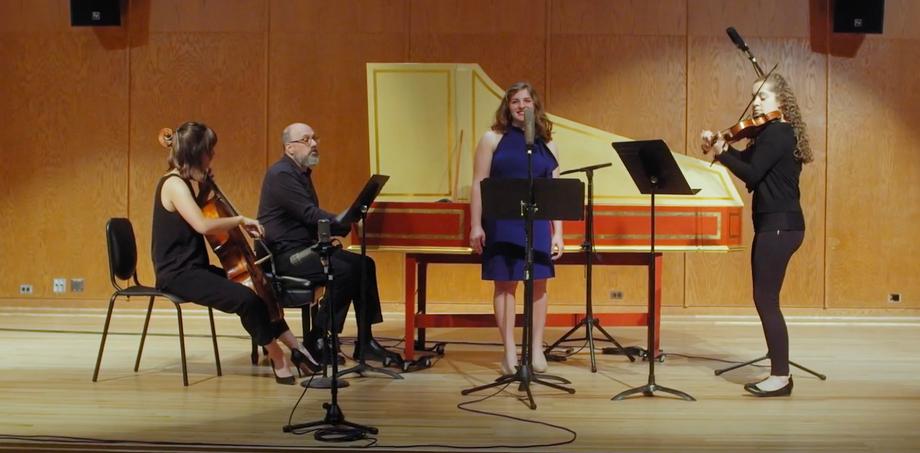A centuries-old composition, brought to life
January 9, 2020
University of Michigan faculty members and students have breathed new life into a rare musical composition that has not been performed for at least two centuries.
Faculty and students at the School of Music, Theatre & Dance did painstaking work to create a performance edition of “Quando o bella Clori,” written by Italian composer and keyboard virtuoso Giuseppe Domenico Scarlatti (1685 – 1757). They debuted the piece at an event in the Hatcher Graduate Library in October.
The performance edition is based on a 1712 piece by Scarlatti. The handwritten composition has been part of the U-M Library’s music collection since the 1950s. It is the only known copy of this work, and was originally part of the private collection of Jean Auguste Stellfeld, a prominent Belgian jurist and musicologist.
According to Music Librarian Jason Imbesi, the acquisition of the Stellfeld Collection marked the Music Library’s shift from curricular support to true research music library. This rare piece by Scarlatti is an example of the kinds of opportunities such a research collection offers.
Louise Stein, professor of musicology, said Scarlatti wrote the piece while he was working in Rome for the widowed, exiled queen of Poland, Marie Casimire Louise de La Grange d’Arquien. As a serenata, the work is created for two solo singers, two violins, and basso continuo.
Stein says, “It seems to be the only surviving serenata from Scarlatti’s time in Rome,” and given that the last pages of the manuscript have been ripped out, “it is especially unfortunate that it is incomplete.”
Stein thinks the piece was likely performed at the Palazzo Zuccari in Rome, where the queen had established a lavish court and held musical evenings.
The music professors and students believe the piece has not been performed for at least 200 years.
“It’s great to have something new that you didn’t know that this person wrote,” said Joseph Gascho, an assistant professor of music and keyboardist who has been advising student musicians as they prepare to perform the Scarlatti piece. “So we’ve learned a little bit more about him as a musician, composer, and person. It’s just a little extra knowledge and insight into what he was like.”
To create a performance-ready edition of the manuscript, flute performance masters student Ellen Sauer entered the notes into music writing software and closely analyzed the work to decipher inconsistencies in the text.
Sauer likens her efforts to that of an archaeologist, adding that her team was forced to improvise due to the age of the piece. Since there are no recordings, the musicians determined the appropriate tempo. And because the lyrics in the 1712 manuscript are haphazardly written under the notes, Sauer said they had to workshop how the old Italian would have been set with the notes.
“In that way, it feels really new,” she said; they were recreating what might have been. And this process, a collaboration that bridged four centuries and required close analysis of the original — many hours spent “seeing his handwriting and feeling the old paper” — left Sauer with a deep and abiding connection to the work and its composer.
By Safiya Merchant and Lynne Raughley

Playing Scarlatti at Michigan